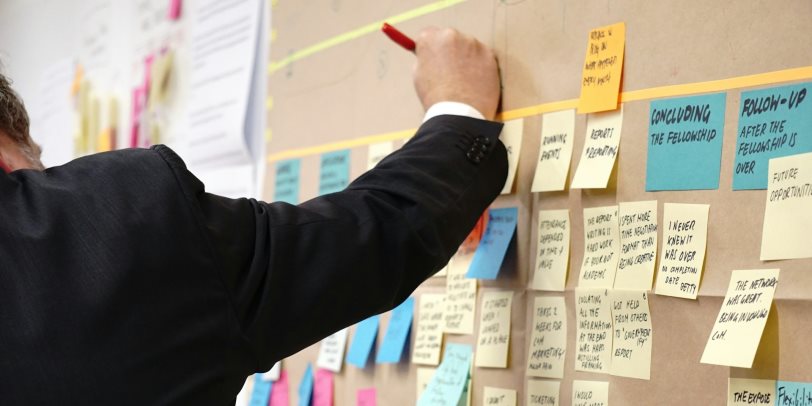Conquer Any Project | Mastering the Fundamentals of Project Management
Project management is essentially your Everest toolkit – a collection of fundamental tools and strategies that will become the backbone of your success as you move forward

Imagine this: you've got a brilliant idea, a vision that could revolutionize your industry or provide a new service that would empower people and improve their quality of life. However, without a plan, that vision remains just a mirage shimmering in the desert of good intentions, and that’s where project management comes in.
Think of it as scaling Mount Everest. You could could just wear some hiking boots and start climbing up the mountain, hoping for the best. But wouldn’t it be wiser to pack the right gear, assemble a capable team, and bring a map?
Project management is essentially your Everest toolkit – a collection of fundamental tools and strategies that will become the backbone of your success as you move forward.
Remember, successful projects aren't accidents – they're the result of careful planning, effective communication, and a commitment to continuous improvement.
Define Your Destination: Mastering the Scope
Think of your project scope as the blueprint. A poorly defined scope is like building without a plan – you might end up with a weak foundation or missing rooms (functionality). So, how do you start building your plan?
Outline the project's goals, deliverables, and boundaries. What are you aiming to achieve? What won't be included? A strong scope keeps everyone focused and prevents scope creep – uncontrolled expansion that derails projects.
Set SMART goals - Specific, Measurable, Achievable, Relevant, and Time-bound – to define what success looks like for this project.
Identify key stakeholders, understand their expectations, and actively manage them throughout the project lifecycle to prevent surprises and ensure everyone is aligned towards the same goals.
Utilize the Work Breakdown Structure (WBS); break down the project into smaller, manageable tasks, making it easier to estimate timelines and resources needed.
Create a Detailed Project Plan
The next step is to develop a detailed project plan which includes assigning tasks and responsibilities, and creating a realistic timeline.
Identify progress sequencing - What needs to happen before you can move on to the next step? Use tools like flowcharts or network diagrams to visualize what tasks are dependent on others tasks to be completed and ensure a logical and simple workflow.
Allocate the required resources, both human and fiscal, by considering who will be responsible for certain tasks or progressive planning, as well as factoring in personnel costs, materials, software licenses, and any potential emergencies. Remember, a well-defined budget helps you make informed decisions throughout the project's lifecycle.
Assemble a Competent Team
Unless you aim, and fully understand your limitations and strengths, to do this project on your own, building a strong and capable team will be an essential engine that drives your project forward.
Identify the specific skills and knowledge needed to complete each task, and recruit team members with the right qualifications and experience.
Clearly define roles and responsibilities for each team member, avoiding confusion and ensuring everyone knows what's expected of them and their goals.
Establish clear communication channels to facilitate information flow and collaboration. Regular team meetings, project management software, and open communication practices are key.
By mastering these fundamentals, you can transform your project management approach from reactive to proactive.





